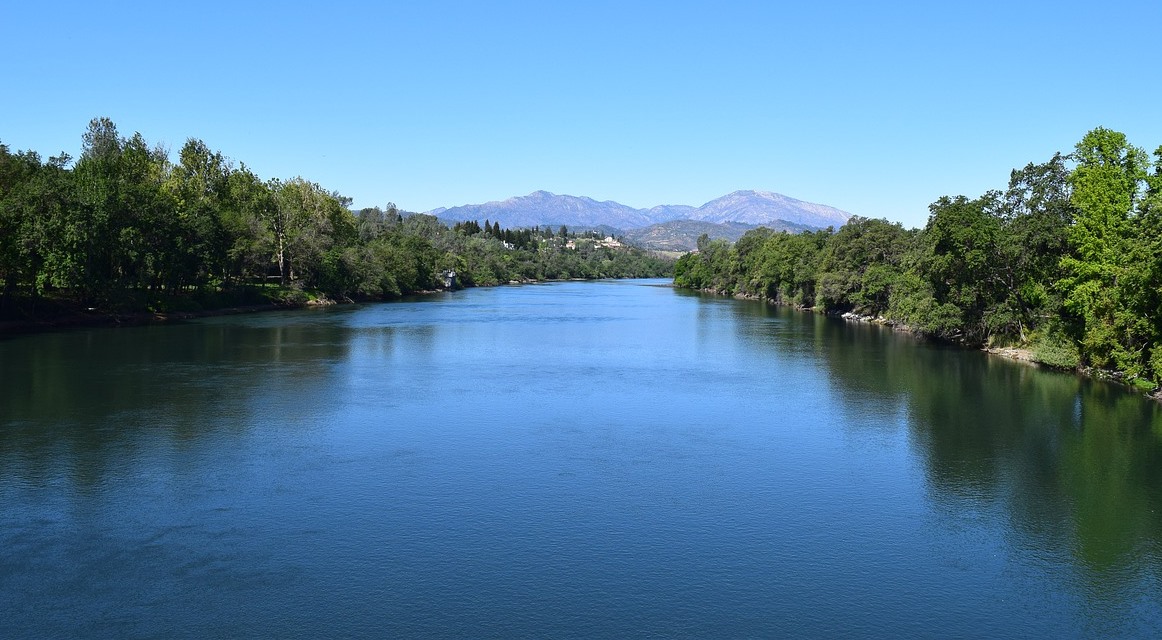Five Local Water Agencies Join Years-Long Effort to Help Recover Salmon While Protecting Water Reliability
From the Natural Resources Agency:
 Five more local water agencies have signed onto an agreement to provide water flows and new habitat to help improve conditions in the Sacramento-San Joaquin River Delta watershed, adding momentum to the state’s plan to adapt to a new climate reality.
Five more local water agencies have signed onto an agreement to provide water flows and new habitat to help improve conditions in the Sacramento-San Joaquin River Delta watershed, adding momentum to the state’s plan to adapt to a new climate reality.
In March, leaders of state, federal and local agencies announced a memorandum of understanding (MOU) outlining terms for a transformational eight-year program to provide substantial new flows for the environment to help recover salmon and other native fish, create new and restored habitat for fish and wildlife, and provide significant funding for environmental improvements and water purchases.
The five new signatories – East Bay Municipal Utility District, Solano County Water Agency, Tehama-Colusa Canal Authority, Friant Water Authority, and San Luis & Delta-Mendota Water Authority – join dozens of local agencies that have volunteered to implement actions and contribute funding to integrate additional water flows with the physical landscape to help improve habitat for native fish in the Sacramento-San Joaquin River Delta watershed.
“We’re excited to see more local water suppliers join this urgent effort to help adapt to a hotter and drier future,” California Secretary for Natural Resources Wade Crowfoot said. “This approach holds the promise to improve environmental conditions more quickly and holistically than the traditional regulatory process, while improving water reliability to communities, farms and businesses. We are making progress, with a lot of work still ahead.”
The state has been actively working since 2016 with local water agencies that voluntarily came together to develop enforceable agreements that provide additional river flows and new habitat to help change the trajectory of declining native fish species. Following the release of a framework document in February 2020, that has been known as the “Voluntary Agreements,” state and local agencies have continued to refine elements of agreements that would enable adaptive, holistic management and deliver environmental improvements more quickly than a regulatory proceeding.
As part of that work, state, federal and local agencies already are coordinating across watersheds to secure funding sources and permits for priority habitat projects and create new pathways to enable project implementation. For example, work expanded in 2022 on a roughly 18,000-acre program in the Sacramento Valley to determine optimal conditions to use flooded farmlands to create food for fish and transport it to migrating juvenile salmon in the river.
Three other projects are currently underway on the American and Yuba rivers to expand suitable salmon spawning habitats, increase floodplain and riparian habitats, and improve the natural river morphology. Many more such projects are planned for ground-breaking in 2023 and 2024.
In addition to that collaborative work, state agencies recently broke ground on three large tidal wetlands projects in the northern Sacramento-San Joaquin Delta and Suisun Marsh. When completed, the projects – Lookout Slough, Bradmoor Island, and Arnold Slough – will restore more than 3,600 acres of wetlands and support recovery of native fish species.
“The evidence is clear that climate change is wreaking havoc with California’s natural systems and water supplies,” California Secretary for Environmental Protection Jared Blumenfeld said. “Critical species such as salmon cannot wait for long regulatory processes to play out. These collaborative agreements are meant to speed up the delivery of needed water and habitat to help California adapt and thrive.”
The State Water Resources Control Board is in the process of updating its legally required Bay-Delta Water Quality Control Plan to protect native fish, wildlife and other “beneficial uses” of water, including municipal, domestic and agricultural water supplies.
The MOU seeks to meet those objectives through an integrated program that restores habitat, secures new flows for the environment above existing regulatory requirements, expands funding for environmental improvements and water purchases, and establishes a new, collaborative science program to monitor environmental conditions and adapt management over time.
Water agencies in the Bay-Delta watershed that do not sign onto the approach outlined in the MOU will need to comply with regulatory requirements established by the State Water Board.
Implementation of the agreements outlined in the MOU is estimated to cost $2.6 billion, to be shared by water users and the state and federal governments. Water agencies will self-assess fees to support implementation of the voluntary agreements. Water users and the state will make flows available through a combination of reduced diversions, year-by-year purchases of water, long-term or permanent purchase of water, and voluntary fallowing of agricultural or pasture lands.



